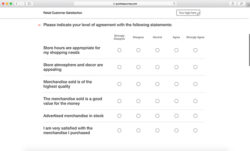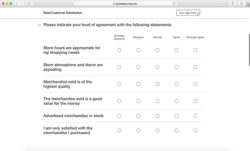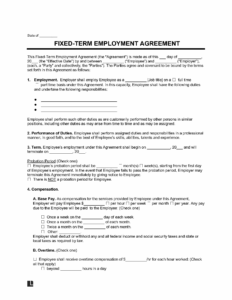Navigating the world of employment can sometimes feel like a maze, especially when it comes to the specifics of how someone is paid. For many businesses, hourly employment offers incredible flexibility, allowing them to scale their workforce up or down based on demand without the long-term commitments often associated with salaried positions. It’s a common arrangement across various industries, from retail and hospitality to creative freelancers and project-based roles.
However, just because an employee is paid by the hour doesn’t mean the terms of their engagement should be casual. In fact, a clear, comprehensive, and legally sound employment contract is even more critical in these scenarios. It sets expectations, outlines responsibilities, and provides a framework for a fair working relationship, protecting both the employer and the employee from misunderstandings and potential disputes down the line.
What Should Your Hourly Rate Employment Contract Template Include?
Crafting an effective hourly employment agreement requires attention to detail. It’s not just about stating the hourly wage; it’s about covering all aspects of the employment relationship to ensure clarity and compliance. Think of your hourly rate employment contract template as the blueprint for a successful and legally sound engagement. A robust template should be adaptable and comprehensive, addressing the unique nuances of hourly work while adhering to labor laws.
First and foremost, the contract needs to clearly identify all parties involved. This means the full legal name and address of the employer and the employee. This foundational information ensures there’s no ambiguity about who is entering into the agreement. Without this basic identification, the rest of the contract stands on shaky ground.
The core of any hourly employment contract is, naturally, the compensation details. This section must explicitly state the agreed-upon hourly rate. Beyond that, it should also clarify how and when the employee will be paid. Will it be weekly, bi-weekly, or monthly? Are there specific days of the month for payroll? It’s also crucial to address overtime compensation in accordance with local and national labor laws, specifying the rate at which overtime hours will be paid. Don’t forget to mention any eligibility for bonuses, commissions, or other forms of compensation that might apply.
Defining Roles and Responsibilities
Another vital component is a clear description of the employee’s job duties and responsibilities. While hourly roles might sometimes be task-oriented, a general outline of the expected tasks, reporting structure, and overall goals helps to manage expectations. This avoids situations where an employee might feel they are being asked to perform duties outside the scope of their agreement.
Work Schedule and Hours
For hourly employees, the work schedule and expected hours can sometimes be fluid. The contract should address how hours are scheduled, whether there’s a minimum number of hours guaranteed (if applicable), and the process for tracking and approving hours worked. This includes stipulations around breaks, meal periods, and procedures for requesting time off. Transparency here can prevent a lot of headaches later on.
Term of Employment and Termination
The contract should specify the term of employment. Is it for a fixed period, or is it an “at-will” arrangement? Equally important are the clauses outlining the conditions under which the employment can be terminated by either party. This includes notice periods, grounds for immediate termination (such as gross misconduct), and any severance pay provisions. Clarity in these areas protects both the employer and employee, providing a clear path forward should the working relationship need to end.
Confidentiality and Intellectual Property
Depending on the nature of the work, you might also need to include clauses related to confidentiality and intellectual property. This protects your business secrets, client information, and ensures that any work created by the employee during their employment belongs to the company, as appropriate.
Dispute Resolution and Governing Law
Finally, it’s wise to include sections on dispute resolution, outlining the process for handling disagreements, and identifying the governing law that applies to the contract. This provides a clear framework for legal interpretation and enforcement, should any disputes arise.
Why a Robust Hourly Rate Employment Contract Template Matters
Having a well-drafted hourly rate employment contract template isn’t just about ticking a legal box; it’s a fundamental tool for establishing a transparent, fair, and professional working relationship. For employers, it serves as a protective shield, mitigating risks associated with misclassification, wage disputes, and potential lawsuits. It ensures that both parties understand their obligations and rights from day one, fostering an environment of trust and mutual respect.
A clear contract also provides immense benefits for the employee. It offers security and clarity regarding their job role, compensation, and the terms of their engagement. This reduces anxiety and allows them to focus on their work, knowing exactly what is expected of them and how they will be compensated for their efforts. Without such clarity, employees might feel exploited or uncertain about their standing within the company.
Furthermore, a comprehensive contract helps ensure compliance with a myriad of labor laws, which can vary significantly by state and country. From minimum wage requirements and overtime rules to anti-discrimination policies and proper payroll deductions, a good contract acts as a reference point to ensure your practices align with legal mandates. Staying compliant avoids costly penalties and legal challenges.
In essence, a strong employment contract is the backbone of any professional hourly work arrangement. It formalizes the agreement, preventing future misunderstandings that could strain the relationship or lead to costly legal battles. It’s an investment in the long-term stability and success of both the employer and the employee.
* Clarity for both parties on expectations and obligations.
* Legal protection against potential disputes and lawsuits.
* Risk mitigation by ensuring compliance with labor laws.
* Establishes a professional and respectful working relationship.
* Provides a clear reference point for terms of employment.
In the dynamic landscape of hourly work, having a comprehensive hourly rate employment contract template at your disposal is more than just a convenience; it’s a strategic necessity. It serves as a foundational document that clearly articulates the terms of engagement, protecting both the employer’s interests and the employee’s rights, and ultimately fostering a productive and respectful working environment.
By taking the time to customize and utilize a well-structured contract, you lay the groundwork for a transparent and compliant employment relationship. This proactive approach not only minimizes potential legal risks but also builds a strong, professional rapport that benefits everyone involved, ensuring that your hourly workforce is engaged, informed, and valued.



